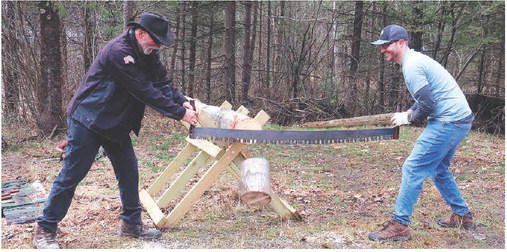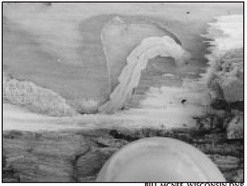Creating the perfect silage is a difficult task


With October reaching its end, a lot of choppers have been out in the country-side harvesting corn silage. Corn silage is a popular option for our area (Clark and Marathon county), and heavily relied on by our numerous dairies. But why does our region grow so much of it, and what is the difference between corn silage and regular corn?
Corn silage is when corn is grown to be harvested as a feed source for livestock, especially cattle. Most corn silage is treated the same as a grain corn (grown for it’s kernels and sold to be made into corn starch, corn syrup, ethanol, etc) but instead of being combined when it is dried out and dead, it is chopped while it is still green instead.
We call this corn ‘dual-purpose,’ because the farmer has the option to chop it to feed cows or combine to harvest the grain. Some corn is specifically bred to be used for silage and will have higher feed quality and more plant tissue, like leaves and bigger cobs. A farmer wants better digestibility because it makes the cows get more nutrients from the corn and produce more milk.
Sometimes the silage-specific corn comes as a “leafy” variety that makes big leaves and grows fairly big. Others will be a Brown-Mid Rib (BMR), which tends to the highest quality silage you can grow. But just like life, there are trade-offs with each option. Dual purpose can make great tonnage and are at a great cost but some varieties cannot feed as well as BMR. “Leafy’s” are known for higher yields and feed well, but you lose the option to combine it for grain. BMR corn is a great choice for silage, and generally boasts best in-class feed quality but its agronomics and higher costs sometimes make it a tough decision. Harvest tends to be fast and furious. Farmers have multiple things to take into consideration but the biggest concerns are harvesting at the correct moisture content of the corn and the weather. Good corn silage needs to pack well and ferment correctly to be safe to feed.
If it is too dry, corn stays too fluffy and leads to poor fermentation, which causes it to rot more, and faster (spoilage). But if it is too wet, the juices leak away from the silo, bunk, pit (seepage), which reduces the silage’s potential for feed and increases the risk of leachate (an acidic organic pollutant).
A majority of these concerns are eliminated with the assistance of technology that can take instant readings through the chopper as the silage is being harvested, sampling and testing by agronomists and nutritionists, good trafficability on fields so that harvesting equipment can travel on the fields without getting stuck.
Silage is a popular item because of the density of quality forage that is harvested in one cutting. Where perennial forage systems take multiple cuttings in a season, silage can produce more tons per acre and achieve it in one cutting. The average farm size is 222 acres and the average dairy has 212 cows, which is a lot of mouths to feed on not a whole-lot of acres. Each acre has to have the best yield potential. Corn silage brings more ease to fulfill that demand; to produce more with less.
As successful as corn silage has been for dairy farms, it has also brought on challenges for field systems. Ground that was used to thick vegetation for most of the year becomes suddenly exposed; creating the risk of degraded soil structure, decreased fertility, erosion, and compaction from heavy traffic. To combat this, a growing number of farmers are using reduced tillage and incorporate cover crops to maintain fertility, increase trafficability, and amend compaction.
For my farmers reading this, if you are curious about what should happen after the corn is chopped, I would suggest assessing fertility and next year’s rotation. Potassium levels can be heavily depleted, considering corn silage takes a lot of it to create plant tissue and when you chop, you are not only removing the corn plant but all the potassium it took up with it.
With the cold and wet weather coming on there will be fewer opportunities to get a cover crop planted. The only species that would give you a chance would be winter rye. When determining manure applications, exercise caution on field conditions such as strength of soil profile (don’t want to get stuck), areas that are saturated (really don’t want to get stuck there), and watch out for contours/slope areas that will channel and have severe surface run-off.
The Soil
Sound-O
ff



